| |||||
| Centuries: | |||||
|---|---|---|---|---|---|
| Decades: | |||||
| See also: | List of years in Scotland Timeline of Scottish history 1315 in: England • Elsewhere | ||||
Events from the year 1315 in the Kingdom of Scotland .
| |||||
| Centuries: | |||||
|---|---|---|---|---|---|
| Decades: | |||||
| See also: | List of years in Scotland Timeline of Scottish history 1315 in: England • Elsewhere | ||||
Events from the year 1315 in the Kingdom of Scotland .

John Balliol, known derisively as Toom Tabard, was King of Scots from 1292 to 1296. Little is known of his early life. After the death of Margaret, Maid of Norway, Scotland entered an interregnum during which several competitors for the Crown of Scotland put forward claims. Balliol was chosen from among them as the new King of Scotland by a group of selected noblemen headed by King Edward I of England.

Robert II was King of Scots from 1371 to his death in 1390. He was the first monarch of the House of Stewart as the son of Walter Stewart, 6th High Steward of Scotland, and of Marjorie Bruce, daughter of the Scottish king Robert the Bruce by his first wife Isabella of Mar.
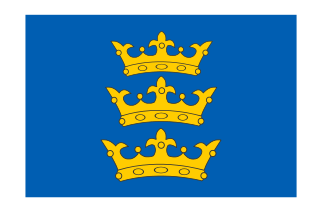
The Lordship of Ireland, sometimes referred to retroactively as Norman Ireland, was the part of Ireland ruled by the King of England and controlled by loyal Anglo-Norman lords between 1177 and 1542. The lordship was created following the Norman invasion of Ireland in 1169–1171. It was a papal fief, granted to the Plantagenet kings of England by the Holy See, via Laudabiliter. As the lord of Ireland was also the king of England, he was represented locally by a governor, variously known as justiciar, lieutenant, or lord deputy.
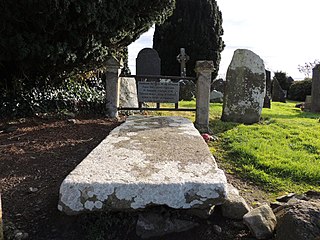
Edward Bruce, Earl of Carrick, was a younger brother of Robert the Bruce, King of Scots. He supported his brother in the 1306-1314 struggle for the Scottish crown, then pursued his own claims in Ireland. Proclaimed High King of Ireland in 1315 and crowned in 1316, he was eventually defeated and killed by Anglo-Irish forces of the Lordship of Ireland at the Battle of Faughart in County Louth.

Duke of Rothesay is a dynastic title of the heir apparent to the British throne, currently Prince Charles. Charles' wife Camilla, Duchess of Cornwall, is the current Duchess of Rothesay. Duke of Rothesay was a title of the heir apparent to the throne of the Kingdom of Scotland before 1707, of the Kingdom of Great Britain from 1707 to 1801, and now of the United Kingdom of Great Britain and Northern Ireland. It is the title mandated for use by the heir apparent when in Scotland, in preference to the titles Duke of Cornwall and Prince of Wales, which are used in the rest of the United Kingdom and overseas. The Duke of Rothesay also holds other Scottish titles, including those of Earl of Carrick, Baron of Renfrew, Lord of the Isles, and Prince and Great Steward of Scotland. The title is named after Rothesay on the Isle of Bute, Argyll and Bute, but is not associated with any legal entity or landed property, unlike the Duchy of Cornwall.
The position of Lord High Steward is the first of the Great Officers of State in England, nominally ranking above the Lord Chancellor and the Prime Minister.
The Treaty of Edinburgh–Northampton was a peace treaty signed in 1328 between the Kingdoms of England and Scotland. It brought an end to the First War of Scottish Independence, which had begun with the English party of Scotland in 1296. The treaty was signed in Edinburgh by Robert the Bruce, King of Scots, on 17 March 1328, and was ratified by the Scottish Parliament at Northampton on 1 May.

Guy de Beauchamp, 10th Earl of Warwick was an English magnate, and one of the principal opponents of King Edward II and his favourite, Piers Gaveston. Guy was the son of William de Beauchamp, the first Beauchamp earl of Warwick, and succeeded his father in 1298. He distinguished himself at the Battle of Falkirk and subsequently, as a capable servant of the crown under King Edward I. After the succession of Edward II in 1307, however, he soon fell out with the new king and the king's favourite, Piers Gaveston. Warwick was one of the main architects behind the Ordinances of 1311, that limited the powers of the king and banished Gaveston into exile.

Earl of Carrick or Mormaer of Carrick is the title applied to the ruler of Carrick, subsequently part of the Peerage of Scotland. The position came to be strongly associated with the Scottish crown when Robert the Bruce, who had inherited it from his maternal kin, became King of the Scots in the early 14th century. Since the 15th century the title of Earl of Carrick has automatically been held by the heir apparent to the throne, meaning Prince Charles is the current Earl.

Succession to the British throne is determined by descent, sex, legitimacy, and religion. Under common law, the Crown is inherited by a sovereign's children or by a childless sovereign's nearest collateral line. The Bill of Rights 1689 and the Act of Settlement 1701 restrict succession to the throne to the legitimate Protestant descendants of Sophia of Hanover who are in "communion with the Church of England". Spouses of Roman Catholics were disqualified from 1689 until the law was amended in 2015. Protestant descendants of those excluded for being Roman Catholics are eligible.
When the crown of Scotland became vacant in September 1290 on the death of the seven-year-old child Queen Margaret, a total of thirteen claimants to the throne came forward. Those with the most credible claims were John Balliol, Robert Bruce, John Hastings and Floris V, Count of Holland.
Walter Stewart was the 6th Hereditary High Steward of Scotland and was the father of King Robert II of Scotland, the first Stewart monarch.
The Battle of Faughart was fought on 14 October 1318 between a Hiberno-Norman force led by John de Bermingham and Edmund Butler, Earl of Carrick, and a Scottish and Irish army commanded by Prince Edward Bruce, Earl of Carrick, brother of King Robert I of Scots. It was a battle of the First War of Scottish Independence and more precisely the Irish Bruce Wars. The defeat and death of Bruce at the battle ended the attempt to revive the High Kingship of Ireland. It also ended, for the time being, King Robert's attempt to open up a second front against the English in the Wars of Scottish Independence.
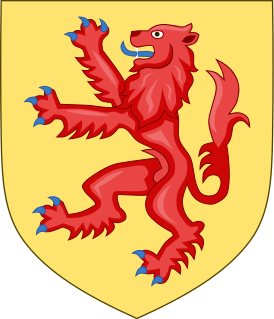
Donnchadh IV, Earl of Fife [Duncan IV] (1289–1353) was sometime Guardian of Scotland, and ruled Fife until his death. He was the last of the native Scottish rulers of that province.
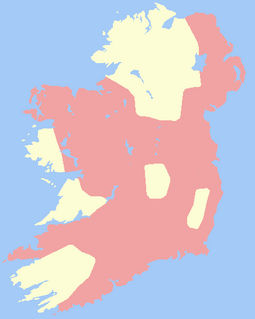
The Bruce campaign was a three-year military campaign in Ireland by Edward Bruce, brother of the Scottish king Robert the Bruce. It lasted from his landing at Larne in 1315 to his defeat and death in 1318 at the Battle of Faughart in County Louth. It was part of the First War of Scottish Independence and the conflict between the Irish, Scoto-Normans, and the Hiberno-Normans.
Events from the 1310s in England.
The Battle of Connor was fought on 10 September 1315, in the townland of Tannybrake just over a mile north of what is now the modern village of Connor, County Antrim. It was part of the Bruce campaign in Ireland.
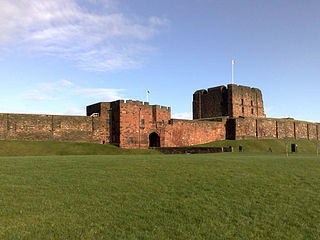
The Siege of Carlisle took place from 22 July to 1 August 1315, during the First War of Scottish Independence, near the town of Carlisle, in Cumbria, England.

Richard Óg de Burgh, 2nd Earl of Ulster and 3rd Baron of Connaught, called The Red Earl, was one of the most powerful Irish nobles of the late 13th and early 14th centuries.
The Battle of Moiry Pass was a military engagement between a Scots-Irish army commanded by Edward Bruce, brother of Robert Bruce, king of Scotland and a Hiberno-Norman force. It was a battle of the First War of Scottish Independence and more precisely the Irish Bruce Wars. Edward Bruce attacked a garrison of soldiers from the Lordship of Ireland, as part of his attempt to revive the High Kingship of Ireland. Bruce considered the battle a great success but his campaign would ultimately fail.